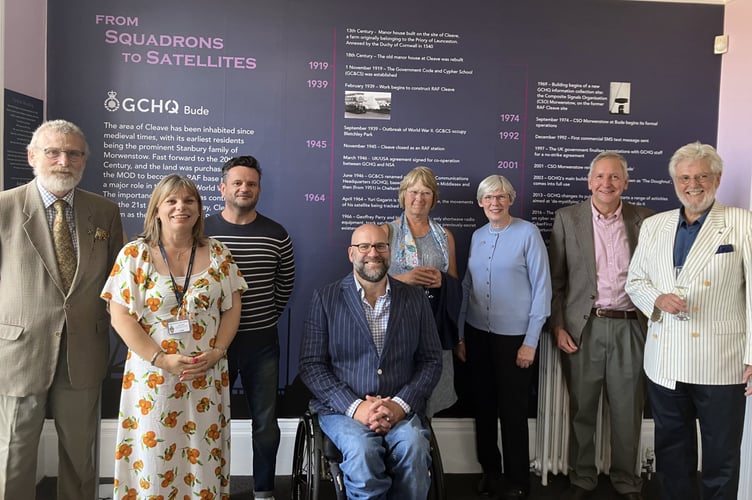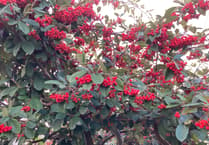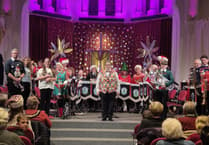An exciting new exhibition opened at The Castle Heritage Centre on July 16, as part of the annual Bude–Stratton Heritage Festival.
From Squadrons to Satellites has been curated in conjunction with GCHQ Bude and PK Porthcurno. It tells the story of the GCHQ site near Morwenstow, from its origins, to becoming RAF base, Cleave Camp and later GCHQ as we know it today. The exhibition is based on ‘Watcher of the Skies’ originally at PK Porthcurno, the Museum of Global Communications.
The area known as ‘Cleave’ stands high on the edge of cliffs at Sharpnose Point. During the 13th century, a manor house stood on the site, and the land was continually inhabited until it was bought by the Ministry of Defence in 1939. ‘Cleave Camp’, as it became known, was actively used by the RAF throughout the war. The exhibition features the stories of some of the people who were based there, such as Bill Young, with some of his personal artefacts on display.
From Squadrons to Satellites includes information on the history of GCHQ itself, from its beginnings in 1919 as the Government Code & Cypher School. The exhibition reveals what it is like to work at the GCHQ Bude site, and the challenges of maintaining the satellites in extreme weather, such as heavy snow and high winds. Although most of the work carried out at GCHQ remains classified, the exhibition sheds light on some of the ways in which the organisation supports the community, such as working with schools and community groups and raising money for charity.
Another addition to the exhibition is the remarkable story of Geoffrey Perry, a physics teacher from Kettering, who retired to Bude during the 1980’s. Discover the fascinating history of how he and fellow students were able to track Russian satellites, using only short – wave radio equipment.





Comments
This article has no comments yet. Be the first to leave a comment.